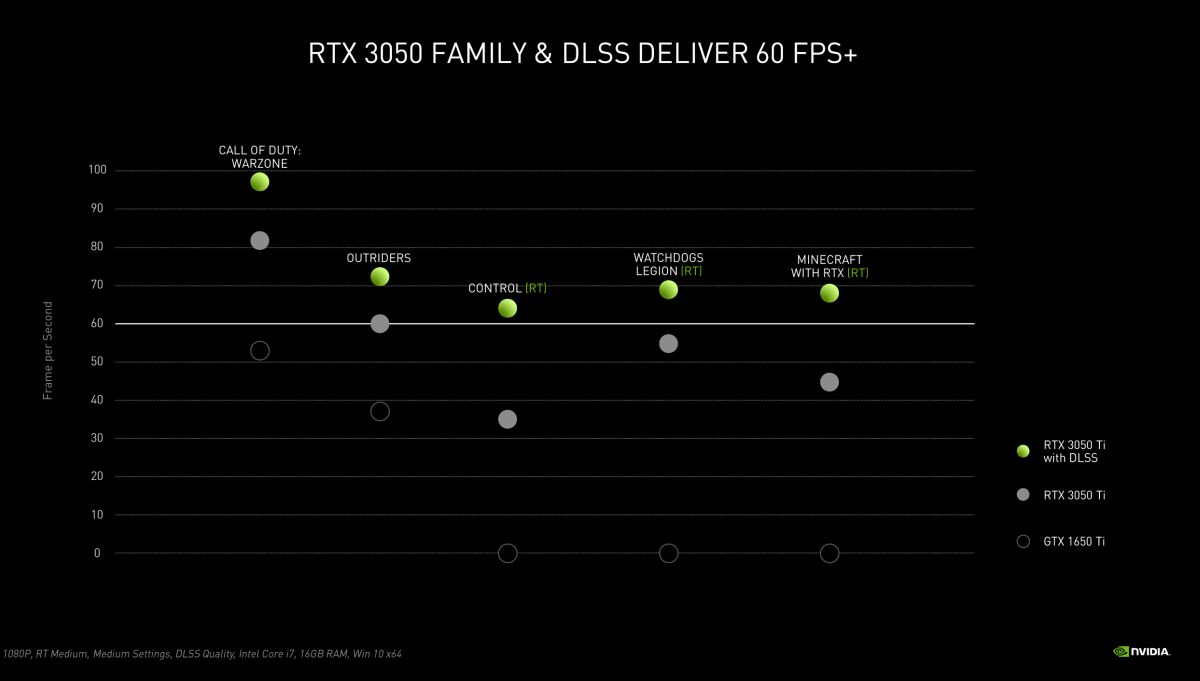Specs-wise, both the RTX 3050 Ti and RTX 3050 are based on NVIDIA’s Ampere architecture and feature 4GB GDDR6 graphics memory. Additionally, both cards utilise a 128-bit memory bus and like all RTX 30 series GPUs, they are able to make full use of the PCIe 4.0 interfaces. As they are part of NVIDIA’s RTX family, both the RTX 3050 Ti and RTX 3050 are also capable of real-time ray-tracing and also support the GPU maker’s DLSS anti-aliasing technology.
There are, obviously, parametres that set both cards apart from each other; the RTX 3050 Ti comes with 80 Tensor Cores, 20 RT Cores, and a maximum boost clock of 1695MHz. For the RTX 3050, the GPU has 64 Tensor cores, 16 RT Cores, and a maximum boost clock of 1740MHz. NVIDIA’s GeForce RTX 3050 GPUs should be available starting this month, with the GPU maker’s brand partners launching their latest gaming laptops that are also being launched right now. To that end, these laptops are also being paired with Intel’s latest 11th generation Tiger CPU lineup.
